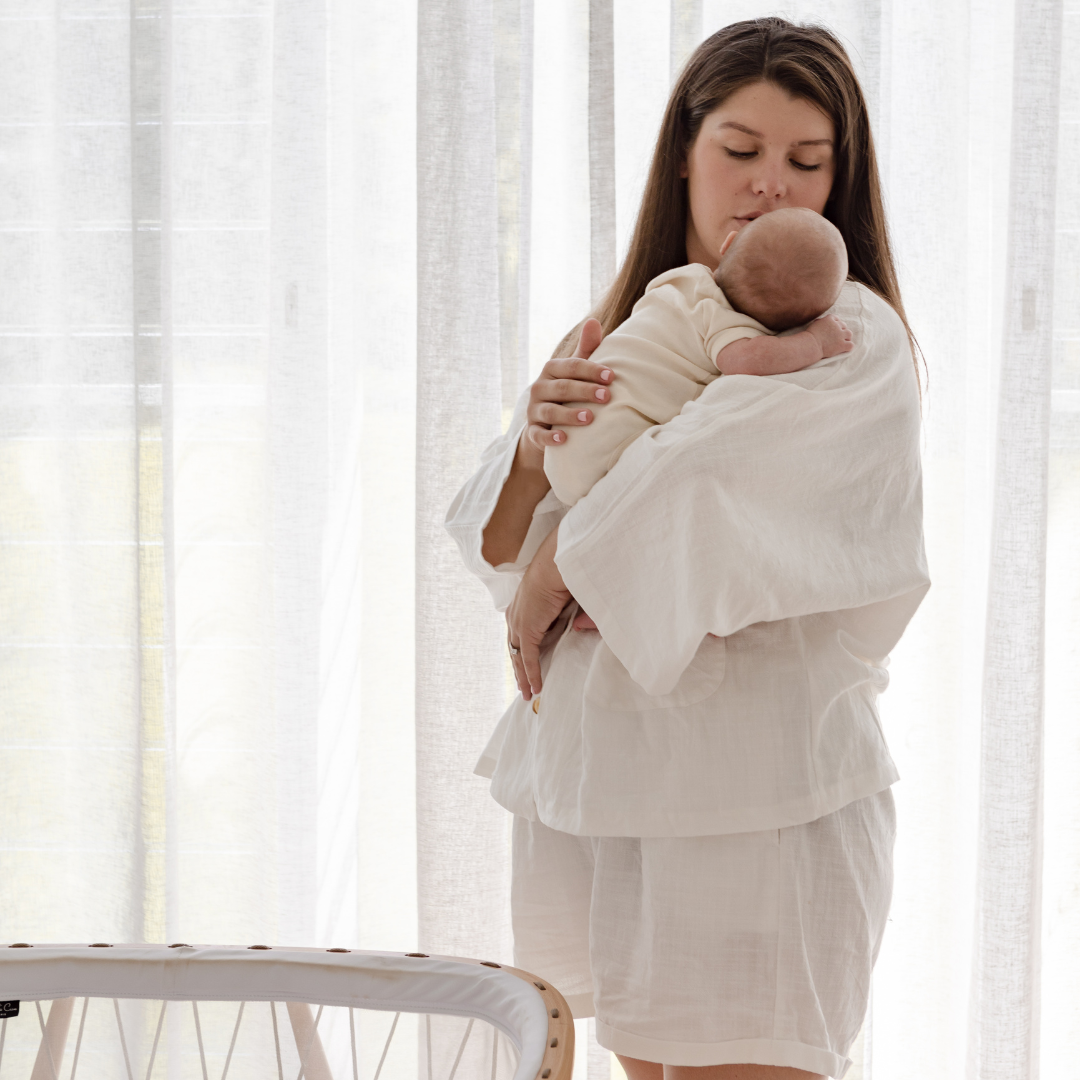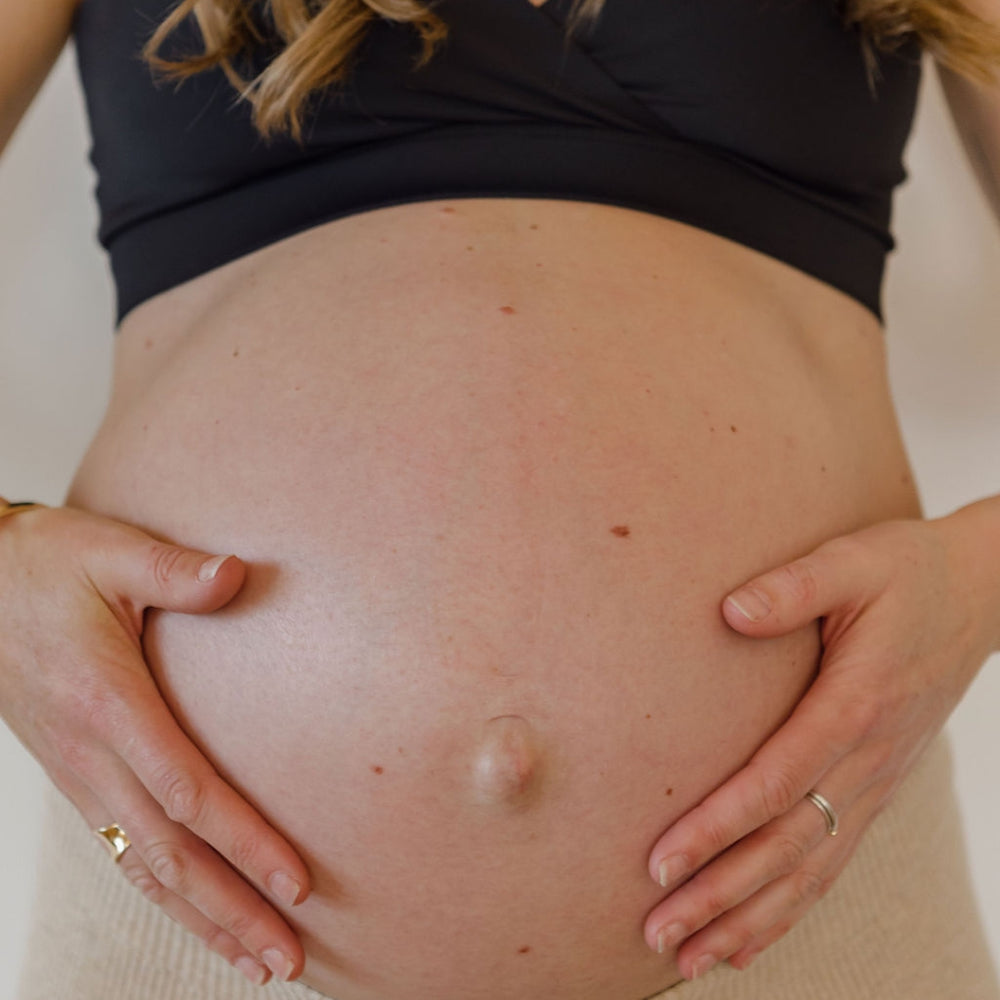Approaching birth and labour can be a daunting process, particularly when you’re doing it for the first time. But mama, we’re here for you. With up to 90% of first-time mums experiencing some form of tear during vaginal birth, and some repeat mums tearing as well, we know how important proper vaginal care can be. So here’s a little bit about what you can expect if you do experience a tear, and how you can best take care of yourself so you can enjoy every moment with your new tiny human.
Causes of vaginal tearing during childbirth
Tearing of the perineum, the skin between your vagina and rectum, is the most common type of tear during childbirth. As it stretches to accommodate your baby’s entry into the world, your perineum may be put under too much strain and split. This is more likely if your baby is large, you have a fast delivery and the perineum doesn’t have as much time to prepare, or you have an assisted birth such as the use of forceps or a vacuum.
A second type of tear, the labial tear, can be less severe and is less common. This is a tear of the soft tissue around the vulva and is generally classed as a first-degree tear (more on that below).
Can you tear during a C-section?
While you may not experience vaginal tearing during a C-section, some bruising and damage can occur to the birth canal and perineum for those who may labour vaginally before needing an emergency C-section.
If a planned C-section is in your birth plan, there is also another world of recovery and support to help heal your caesarean cut. Read here for how you can prepare for postpartum recovery after a c-section.

How many degrees can you tear during birth?
There are four different degrees of vaginal tearing that can happen during birth. A first-degree tear, of either the labia or perineum, is the least severe. This generally means that only one layer of skin has torn and may or may not require stitches.
A second-degree perineal tear is the most common and goes a bit deeper, usually tearing the skin and perineal muscle. A second-degree tear will require stitches that are usually applied in the delivery room.
Third-degree and fourth-degree tears are less common but more severe. A third-degree tear means that the skin, perineal muscle, and the muscles around your rectum have torn. While a fourth-degree tear also causes damage to the membrane around your anus. These both require stitches, which may need to be applied in an operating room, and can also require antibiotics or medication to help with the healing process.
But please don’t panic too much in the lead-up to birth, as only 2% of women experience the most severe type of tearing. As much as it can be daunting looking into the face of an unknown labour, you want to be able to soak up those first few moments with your little one afterwards as much as possible, rather than worrying about what may or may not happen.

How long does a birth tear take to heal?
Your healing journey will depend on the severity of the tear, how clean the tear was, as well as the care process. When you receive stitches for a vaginal tear these will usually dissolve on their own within six weeks, so you don’t need a follow-up visit to have them removed. However, it is important to make sure you keep any follow-up appointments with your doctor or birthing team to make sure everything is healing as it should.
A first-degree tear could be healed within several weeks, while a second-degree tear usually takes between three and four weeks. Third and fourth-degree tears will take between four to six weeks to heal, or sometimes even longer for the most severe injuries.
Is tearing during labour better than being cut?
An episiotomy is a purposeful cut of the perineum by a doctor during birth, to help prevent a severe or unpredictable tear. Typically, they are done during assisted births where a vacuum or forceps is used to help open the birth canal for your baby’s welcome, or to cut in a specific direction to prevent an unpredictable tear that could cause more damage. They may also be advised if you are at a higher risk of tearing due to your baby’s size or position.
An episiotomy is considered a second-degree tear, so it will take a few weeks to heal and require stitches. Obviously, no tear or cut is the ideal result of labour. However, if it comes down to a fourth-degree tear or a purposeful cut, one is more ideal than the other.
But like any assistance during birth, an episiotomy comes with its own pros and cons, so make sure you chat with your pregnancy care and birthing medical team about what options may come up during labour, so you’re prepared with all the knowledge you need if a decision needs to be made in the moment on the big day. Having a birth preference is also important to help communicate your wishes around interventions like an episiotomy, which will require your consent.

How can I stop tearing during birth?
While there’s no absolute way to prevent tears during birth, there are a few steps you can take to prepare your perineum to help reduce your risk of tearing.
Perineal massage is the best way to do this, to help stretch your perineum in anticipation of childbirth. This should be done no earlier than 35 weeks of gestation with the use of a lubricant or special Perineal Massage Oil. However, there are some instances where perineal massage isn’t advised during pregnancy, so like always, chat with your pregnancy healthcare team about whether it’s right for you.
While you’re at it, you can also chat with your team about the possibility of perineal support during birth, such as the use of warm compresses or what positions might be best for you to help reduce the risk of tears.

How do I recover from tearing after birth?
Like any wound, a vaginal tear requires its own type of care and support to help heal properly. Avoiding intercourse and strenuous activity or pressure on your pelvic floor is highly advised for the first few weeks, particularly when it comes to going to the bathroom for the first time after birth (you can read more on that here).
Here are some other ways you can help support your recovery from tearing after birth.
Perineal Wash Products
Our number one product suggestion, make sure you invest in a Perineal Wash Bottle to ease your recovery. This can effectively keep you clean without pressure after going to the bathroom or during a shower.
Perineal Foam and Healing Peri Spray can also be used to help with post-birth hygiene while also providing comfort to tender areas.
Postpartum Healing Support
For your day-to-day recovery, Postpartum Briefs are number one on our shopping list. They’re stretchy, supportive, and practical when dealing with vaginal bleeding after birth. Pair these with Herbal Infused Postpartum Pads for more comfort, or use a Warm & Cool Insert that can slip directly into the briefs. Put it in the fridge or freezer to help ease inflammation and irritation, or warm it up for support with cramping.

Sitz Baths
Finally, rest and relaxation are important to make sure that you’re supporting your perineal tear at home. A warm bath with Postpartum Bath Salts or a specialised Postpartum Soak can help relieve pain in those delicate areas and soothe tender skin.
Whether you’re still waiting for the big day, or you’ve already welcomed your little one into the world, looking after yourself is one of the best ways you can look after your new baby. So take a deep breath, give yourself some time where you can, and think about what you want in your Complete Recovery Care Kit, so you can get back to yourself and soak up every precious moment with your little one as soon as possible.



